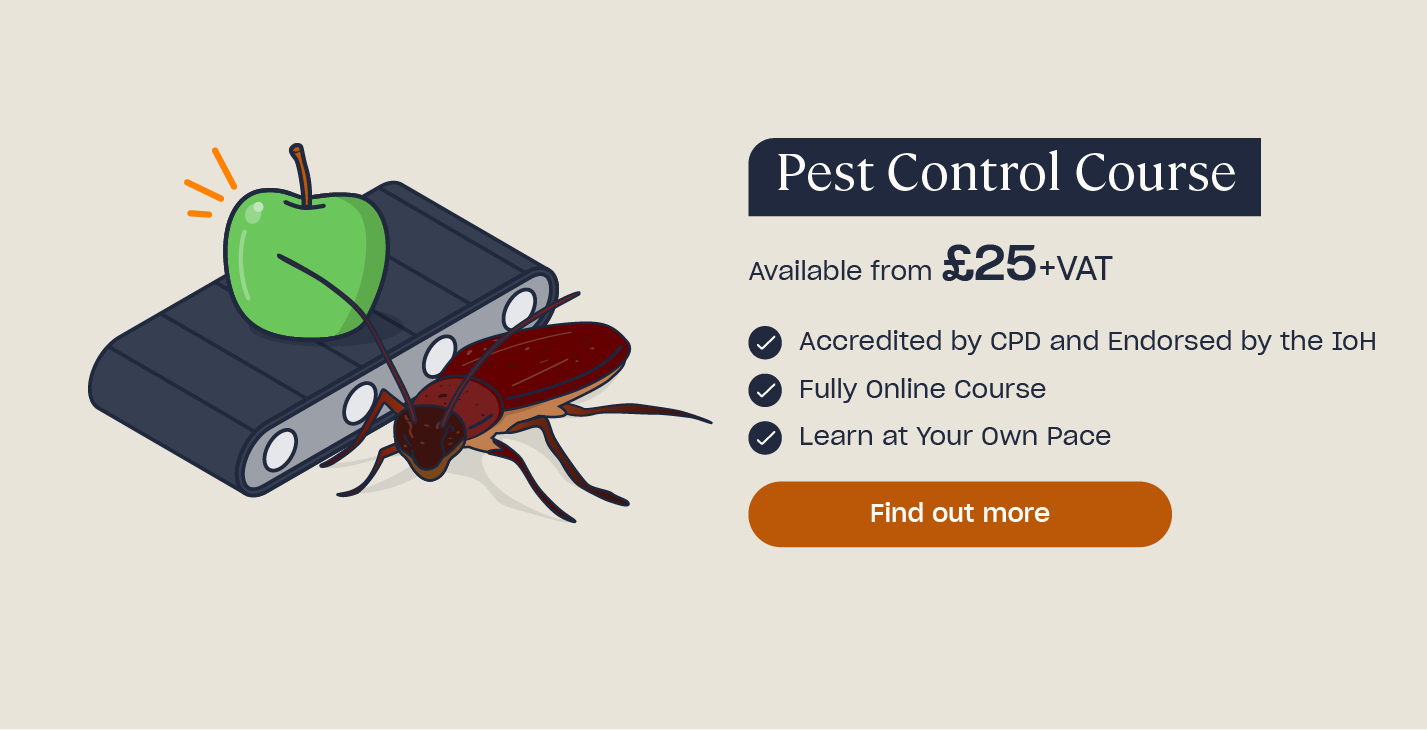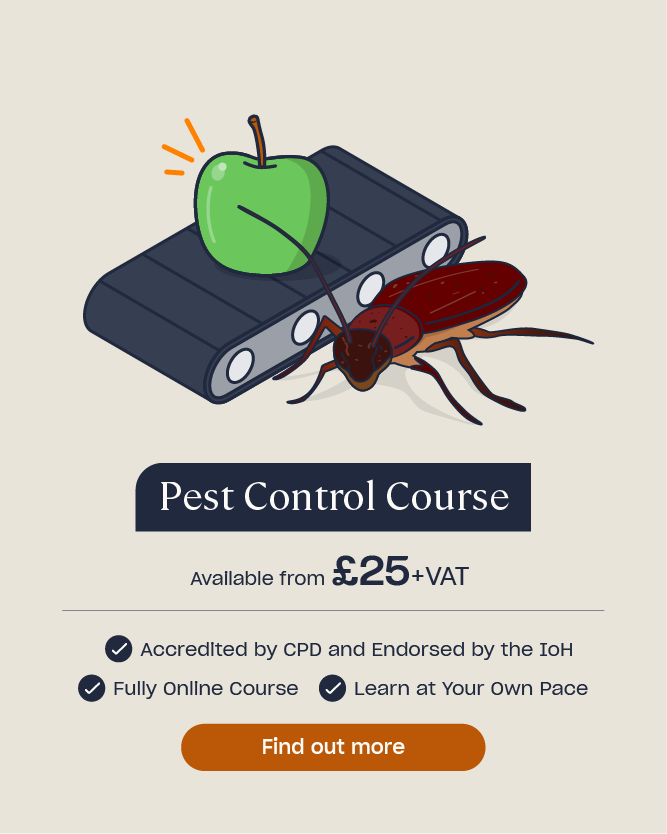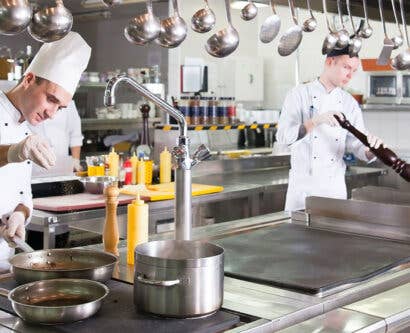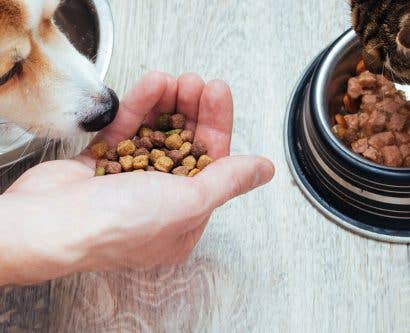Pest Control in the Food Industry
Pests can cause issues in any environment, however they can be a cause of particular concern for those who work in the food industry. Pests can cause significant problems in the food industry, spreading disease and bacteria, contaminating services and even nibbling on produce. All those who work with food have a responsibility to effectively manage pests and poor pest control can undermine high standards of hygiene, result in a low hygiene rating and negatively impact the public’s perception of a premise. In this article we will explain what pest control is, outline why effective pest control is important and explore different methods of pest control.
What is Pest Control?
Pest control is an umbrella term that refers to the management and prevention of pests. It includes practices that prevent their entry into a premise or eliminate them entirely. Pest control can range from home remedies, such as using neem oil to deter bugs, to industrial pesticides and heavy duty traps. Pests pose a significant risk to human health and so it’s vital that they are dealt with effectively to reduce the chances of them spreading disease and causing harm.
For those who work in the food industry, pest control is not only essential, it is a legal obligation. There are several key legislations that mandate high standards of hygiene and these also encompass effective pest control. Under these regulations, food businesses are obliged to uphold high standards of hygiene and could face fines, prosecution and business closure if they fail to meet the necessary regulations.

Key regulations that pertain to a food business’s legal responsibility to manage pests include:
- Health and Safety at Work Act 1974 – This act places a duty on employers to ensure that all employees work in a safe environment. It is a primary piece of legislation that protects an employee’s welfare and ensures their health and safety in the workplace. Effective pest control falls under this duty as pests can pose a risk to the health and safety of employees.
- Food Safety Act 1990 – Under this act, food business operators (FBOs) have the responsibility to take all necessary precautions to prevent pests and any danger they may pose to the public by compromising the safety and hygiene of food products.
- Food Safety (General Food Hygiene) Regulations 1995 – This act made it mandatory for food businesses to ensure good hygiene practices that include protection from, amongst other things, hazards to human health from external sources of contamination such as pests.
This list is not exhaustive and references to the importance of adequate pest control can be found in numerous pieces of UK legislation. Whilst not all regulations specifically pertain to the food industry, the prevalence of pest management in UK legislation highlights the importance of thorough pest control in order to reduce the risk of undue harm to humans and the environment.
Want to test your knowledge of pest control? Take our pest control quiz to help you identify whether you are taking the necessary precautions to keep your business pest free.
Importance of Pest Control in the Food Industry
Effective pest control in the food industry is essential as without it pests can enter premises spreading bacteria, contaminating food and destroying equipment and supplies. All food businesses must have pest control measures in place regardless of whether it is a restaurant, hotel, cafe or food truck. Pests are attracted to warmth, shelter and food and most food businesses can provide them with all three; resulting in them attracting numerous different types of pests.
Pests of any kind can cause a wide range of problems including:
- Spreading harmful bacteria and disease
- Destroying property (i.e. chewing through wires, burrowing holes in walls or destroying equipment)
- Contaminating food with droppings or larvae etc.
- Reputational and financial damage
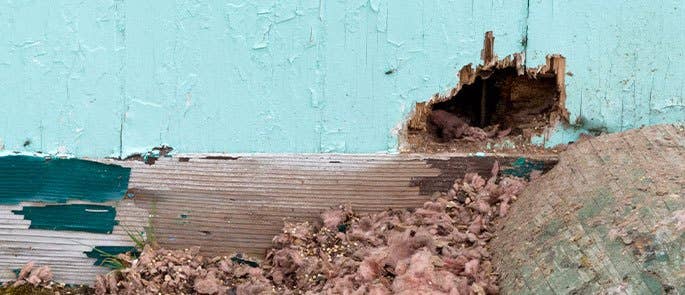
Pests can cause an extensive amount of damage to both property and people and that is why pest control is so vital. To ensure that a business is adhering to their legal responsibilities and effectively managing pests, Environmental Health Officers (EHOs) will expect to see evidence of adequate pest prevention during a food hygiene inspection. If they see signs of a pest infestation, gaps in pest management processes or a general lack of awareness of the risk that pests can pose, they will give you a high score in the Structural Requirements category which will negatively impact your overall rating. You can learn more about the different categories that will be assessed during a food hygiene inspection here. You can also learn more about what an EHO will be looking for during an inspection here.
If you spot signs of a pest infestation at your food business you must immediately contact a pest contractor. You should then disinfect, wash and dry any equipment, surfaces or utensils that you think have been touched by any pests and throw away any food that you think they may have come into contact with.
Want to Learn More?
Learn more about pests and how to reduce the risk that they pose with our Pest Control Course. Our course will explain how to identify common pests as well as how to take action to prevent pests from becoming a problem.
Examples of Pests
When most people think of pests they often think of rats and cockroaches. However, a pest is any living thing that can have a detrimental effect on humans, buildings or the environment. It’s important to have an awareness of the different kinds of pests that you may encounter as they can pose different risks, gain entry to premises in different ways and require different management techniques.
Below you will find a list of some of the most common pests found in the food industry and signs that they have entered your premises. The list is not exhaustive, however, it highlights the variety of pests that can be found in the food industry. As mentioned, it’s important that you understand the different types of pests you may encounter as they are likely to have slightly different prevention/control methods.
Types of pest include:
- Rats and mice – Signs of this pest include: small footprints in dust, droppings, holes in walls and doors, nests, gnawed goods or packaging, grease or smear marks, urine stains on food packaging.
- Flies and flying insects (e.g. moths) – Signs of this pest include: bodies of insects, live insects, webbing, nests, droning or buzzing, maggots.
- Cockroaches – Signs of this pest include: eggs and egg cases, moulted ‘skins’, the insects themselves, droppings.
- Ants – Signs of this pest include: small piles of sand or soil, the insects themselves, flying ants on hot days.
- Birds – Signs of this pest include: feathers, droppings, nests, noise, the birds themselves.
- Beetles and weevils – Signs of this pest include: moving insects, particularly in dry food, small maggots.
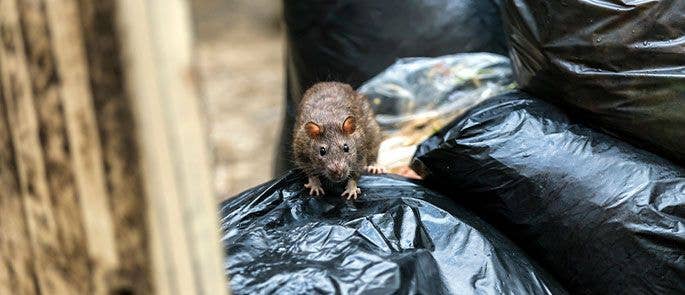
Three Methods of Pest Control
As mentioned above, pest control is an umbrella term that refers to the management of pests. There are many different ways in which pests can be controlled however these can be divided into three main methods; physical, biological and chemical. Below you will find an overview of the different methods and some of the advantages and disadvantages of each one.
Physical Pest Control 
Physical pest control encompasses using physical barriers to kill, trap or block the entry of pests. Common physical pest control techniques include destroying nests, laying traps, installing screens on windows and sealing gaps with steel wool or caulk.
Advantages:
- As no chemicals are used to destroy or deter the pests the risk of chemical contamination from strong pesticides is reduced.
- Pests cannot develop a resistance to physical pest control making it an effective long term management solution.
- As the method does not involve chemicals it is more environmentally friendly and less harmful to the surrounding environment.
- It works well for small scale infestations that need to be dealt with quickly.
Disadvantages:
- Physical traps often kill pests rather than trapping them for later relocation. Many see this as an inhumane option especially as pests are often simply trying to survive in their natural habitat.
- Physical methods are less effective for large scale infestations and may not work well for smaller pests such as ants, making it the more labour intensive option for certain pests.
- Though over time pests may become deterred if their entry into a premises is blocked, physical pest management is not as effective in preventing future infestation.
Chemical Pest Control 
Chemical pest control is one of the most widely used pest management methods and it encompasses the use of strong chemicals to kill pests. Pesticides are chemical pest control substances that are used to poison and kill the pests that consume them. Pesticides are heavily regulated in the UK, limiting who can buy and use them. If you choose to use chemical pest control it’s advisable that you contact a professional pest control service who will know which chemicals to use and how to use them safely.
Advantages:
- Chemical pest control is highly effective and works very quickly to eliminate pests.
- Pesticides can often be the cheaper option and though tightly regulated, weaker pesticides are available to purchase for those without the necessary qualifications to use strong ones.
- Chemical pest control products are easy to use and not very labour intensive.
Disadvantages:
- Pesticides are highly toxic and can be incredibly harmful to anyone who comes into contact with them.
- Pests can develop a resistance to chemical pest control methods making them less effective over time.
- Overusing strong pesticides can contaminate groundwater and the local environment.
Biological Pest Control 
This method is seen by many as the most natural as it does not rely on the use of pesticides or other toxic chemicals. Biological pest control involves introducing a pests’ natural predator, for example getting a cat to deter mice, and is one of the oldest pest control methods known to man.
Advantages:
- It’s an environmentally friendly and sustainable way to manage pests as it relies on nature’s hierarchy to control pests rather than excessive human intervention.
- Pests cannot develop a resistance to biological pest control methods.
- As no chemicals are used, there is little to no risk to non-targets such as humans and pets from hazards such as chemical contamination.
Disadvantages:
- The efficacy of the method heavily relies on the environment and may not be suitable in all locations.
- The results of biological pest control are often much slower than physical or chemical pest control.
- Whilst introducing a pests’ natural prey increases the chances of the pest being eliminated, there is no guarantee that will happen, making it a somewhat unreliable method.
The pest control method that you decide to use will depend on numerous factors such as your budget, your location and the size and scale of your infestation. Nevertheless, it’s important to know the options available to you as one method might work better for a specific type of pest than another.
Whichever method you decide to use, it’s vital that you are consistent and regularly check that they are working as intended. As well as this, exercising good habits in the kitchen such as cleaning as you go or storing food off the floor and away from walls can help to prevent pest infestation. Prominently displaying kitchen safety posters that reiterate the importance of good hygiene practices can also help to reduce the risk of pests by reminding staff of their responsibilities and what they can do as individuals to prevent pests.
Effective pest management is essential in order to keep staff and customers safe. Without proper controls in place, businesses will attract pests that can harbour disease, damage property and cause reputational damage. Consistent checks and regular cleaning are preventive measures that can stop the infestation of pests or at the very least, help you to spot signs of an infestation before it gets out of control. If you spot signs of an infestation, immediately contact a pest contractor who can utilise one of the three pest control methods to tackle the problem.


